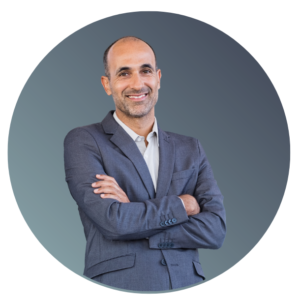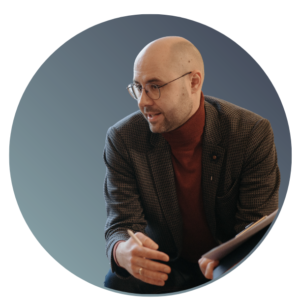Our Success Stories
Executive Coaching
You’ll encounter highs and lows and outstanding learning opportunities as an executive. Our coaching professionals will help you identify your talents, most impressive outcomes, and outstanding achievements and put them in an A-class resume. Include your projects, teams you led, achievements you accomplished, problems you overcame, credentials that taught you best practices, events, and people who influenced and guided you to become the most outstanding executive you can be. Highlighting the vital functions you ran in your prior businesses while projecting the value you can add to any organisation will land you the next step in your career, not any role or organisation, but the ones you target and want to impact.
Corporate Leadership Program
Alina is an experienced operations director at a large global IT company. Her direct reports have worked for her for a long time, so she is used to working with them. They’ve built trust in the group, which has helped the organisation get good results.
In a recent restructuring, the executive asked Alina to put more people on her team, especially managers and directors. Alina was happy but cautious because she needed time to get to know the new group.
Manager & Team Coaching
Matthew is a 33-year-old manager. He was a customer service agent for ten years and was then promoted to lead a team of 12 people. Matthew has two senior individuals in his team who have been in the company longer than Matthew. Matthew is finding it difficult to deal with these individuals because they complain about anything they can think about on a particular day. The team also wanted to know what everyone was doing to achieve the team goals…
Career Change Coaching
Nelson is a director of media production with 30 years of experience in the television industry. Due to the recent global pandemic. The media house had to downsize its operations, and the program did not get funding or sponsorship, leaving Nelson jobless for many months.
Nelson enrolled in a new entrepreneurship program to start his own business in photography and videography using drones. Nelson was required to learn financial management, marketing, social media, and the whole lot…
Recent Graduate Coaching
Mia Miyazawa is a young graduate in Digital Marketing. She had already spent three years studying in one of Australia’s top universities. Since arriving in Australia, she has worked in some odd jobs but not in digital marketing. She is worried that her knowledge may become outdated. It has been twelve months and no job in sight…
Outplacement Services
Angus is a forty-eight-year-old business executive. His experience has been with large technology companies. With over 20 years in the last role, he has always hired people for his company. Angus had no need to write his own resume for a long time until he was made redundant due to COVID19. The irony is that companies have paused hiring, particularly for the senior roles. Angus has become anxious. After six months of tirelessly looking for work, his professionally written resumes don’t seem to be doing the job for him…
Executive Coaching
Building consensus is an important strategy to get the buy-in and avoid derailing ideas in front of the decision-makers.

Leonard
After ten years in this role, Leonard feels it’s time to take on more responsibilities. He spoke to his manager about his interest; However, his hands-on skills were required to complete several critical projects on the frontlines. His manager did not support Leonard’s request. The organization had not invested in any succession planning because of the large volume of work they have taken on over the last six years. Leonard does not see any hope in him moving up the ladder.
Leonard approached one of our career coaches to assist him in making the right decision for his career. Leonard likes his job and the fact that his customers like him as the trusted adviser. However, at this phase of his career, he wants to take more of a leadership role with added responsibilities of managing the sales and system engineers’ teams. Leonard has not led people before, and he wants further coaching.
After the initial consultation and exploring where Leonard would like to see himself in the next 2-3 years. We recommended Herrmann’s Whole Brain Thinking (WBT) and Herrmann Brain Dominance Instrument (HBDI) assessment. HBDI instrument gave Leonard a new perspective of how he thought when he was under stress. Leonard’s profile assessment was interesting. We found that Leonard and his manager may have their thinking preferences in the opposite quadrant on further questioning.
From the profile below, you can see Leonard’s profile in Blue, and his manager profile could be as shown in White (PS. we did not do profile assessment for his manager).
Key questions that Leonard has to answer were:
- When you had to make a significant and vital decision? Did you ask for others’ opinions?
- Think about any lost opportunity in the past? How might the result look if you asked anyone or use others as a sounding board to whet your ideas?
- You are proposing a new idea to your team. What makes you think your idea will work? Do you have the facts and big picture view of the outcome? Did you build consensus before your final delivery?
- When was the last time you asked your partner how she felt about a decision you had to make?
SUMMARY:
Leonard had to put into practice his newly acquired skills around self-awareness, consensus building, and identifying the least preferred quadrant in every decision-making process. At the end of the program, Leonard has continued to work as a Senior Solution Architect. However, he felt he has more energy and a renewed sense of optimism about the future. He is open to explore new opportunities.
Corporate Leadership Program
Leaders can leverage the immense potential in their people within their own organization if only they discover the team’s unique innate drives.

Alina
In a recent organizational restructuring, the executive asked Alina to take on a more prominent senior managers and directors into her team. Alina was excited but optimistically cautious because she requires time to build trust with the new group.
Problem:
Where do I start with this team? I have not managed a team with eighty percent of them in senior roles. How to approach this team, use my strengths and leverage the team strengths to produce an excellent outcome for the company. One in which the staff must feel empowered with their sense of achievement.
Our Solution:
We had several meetings with Alina to understand what she wanted to achieve. She was keen to listen and adapt a strategy that would work. One of the essential requirements was that she was open about her profile with the team and had to be part of the workshops, to which she agreed. We also suggested an info session with her staff and be open about what we wanted to achieve as a group. We established a common ground and cleared all the questions the staff members had.
We recommended the Instinctive Drive System coaching for this team. This system uses the innate drive that individuals possess and demonstrate how that may show up when making decisions. The company decided to combine the three-day offsite and IDS coaching event with their quarterly business review meeting with the sponsorship of Alina’s new manager.
Based on the Individual and team profile as shown below.
Alina’s profile on the left and the team profile on the right was interesting. At first, when Alina saw these profiles, she was surprised and pleased at the same time. Surprised that she thought her new staff members would be different, glad because she knew she would work well with a team of similar innate drives.
Over the next three days, we had several role-plays to put the team in several business decision-making scenarios. It became apparent that the group had more authenticators and completers but low verifiers and improvisers.
The summary:
Alina and her team have to be careful when making any important strategic decisions. She is the only high-use verify person in the group. Team members who are driven to complete projects may overlook some aspects of the projects. This is where Alina can tap into the resources within her organization. For instance, her manager, who is a high-use verify person may be able to validate the team’s assumption. Instinctive Drive System can be adapted to any team situation. This system has produced much success where the team had to offset their low preference drives with the high. Leaders can leverage the immense potential in their people within their own organization if only they discover the team’s unique innate drives.
Manager and Team Coaching
Individuals perform much better when they know their key strengths, they improve team productivity and well-being of self and the team.

Matthew
Matthews maintained a high customer service score (NPS 75 and above), and he had to distribute the volume of work equally. He has to make sure the right level of skilled people who can support the premium customers because their feedback contributed to Matthews’s KPI.
Matthew consulted his manager for some direction, and his manager suggested he speak to one of our coaches. We established what Matthew wanted to achieve for himself and the team. After an Info session with Matthew, his manager, and the team. The team could implement Stand Out Assessment and Design Thinking Team meetings to achieve their goals.
Solution:
We gathered the profile assessment for the individuals. The report gave Matthew and insight into the individuals’ unique vital strengths. Matthew used Stand Out effectively to leverage the right resource to achieve the right outcome promptly. His employee engagement score was the highest in the last three years, at 78%. His NPS was above 75 year-over-year. However, a few thought that all the members were not playing fair in the team.
Results:
Mind Morph team implemented; a weekly stand-up team meeting based on the design thinking principles. One that involved all the team members in writing down on the whiteboard. For instance, one to two exciting things they did in the week, the unique challenges they encountered and how the manager could help them move the big rocks. After six weeks of the stand-up team meeting, the team began to understand each other’s workload. Matthew is well on his way to developing a high-performing team with the help of Stand Out coaching and Design Thinking Team meeting. He has energized the team to deliver better results in the coming years. Individuals perform much better when they know their key strengths, they improve team productivity and well-being of self and the team.
Career Change Coaching
Quadrant thinking requires individuals to assess their own default thinking patterns and more importantly their least preferred thinking preference to succeed in their business and career.

Nelson
Nelson enrolled in a new entrepreneurship program to start this own business in photography and videography using drones. Nelson was required to learn financial management, marketing, social media, and the whole lot. He had to wear multiple hats as a small business because he could not hire people to work for him.
Problem:
After about 12 months of desperate job hunting, it became apparent to Nelson that the Media production roles are going to be scarce. Media production is such a niche service, and it is not viable in a small market in Australia. He had to do something else to keep himself occupied. Nelson is in his mid-fifties. He may have to compete with young professionals to get back into work.
Solution:
Nelson enrolled in a new entrepreneurship program to start this own business in photography and videography using drones. Nelson was required to learn financial management, marketing, social media, and more. He had to wear multiple hats as a small business because he could not hire people to work for him.
Results:
Nelson is offering free trials to the booming real estate market. He provides free cloud-hosted videos for potential customers to view the property from different angles and times of the day.
Nelson was able to learn new skills and adapt himself to succeed in a similar industry. He is well on his way to make a massive uplift in his confidence level. Thanks to the leadership coach at Mind Morph, who carefully observed his leadership profiles and his interests to give the best advice he could get. Quadrant thinking requires individuals to assess their own default thinking patterns and more importantly their least preferred thinking preference to succeed in their business and career.
Recent Graduate Coaching
Career coaches are like your medical doctor, your personal fitness coach or your business coach. You want to seek their advice for an early diagnose. They are your sounding board, the sooner you seek advise the better your career outcomes would be.

Mia Miyazawa
Problem:
It takes over 2.6 years for a graduate to find a secure job in Australia. The International students’ business is more than $25B in Australia. But the sad part of the story is that many students end up taking on odd jobs and work in the industry of their choice. Mia was courageous to call Mind Morph and asked for free consultation to know if we could help her. She realized that her university career counsellors are not equipped to support the individual needs of the students. And many international students do not know the right networking groups to seek the required support either.
Solution:
Mia called our career coach at Mind Morph, and she initially sent a bunch of emails to confirm if our career coach was able to assist. Then after receiving a favourable response, she was comfortable to speak with our career coach. Mia was having trouble writing her resume since she had no local experience. Mia was not sure if she will end up working as a digital marketer in Australia. Mia was losing confidence in the current pandemic situation.
Results:
Our career coach listened to Mia. He developed a strategy to focus her attention on her studies, assignments, and projects. She was able to talk comfortably about her project and how she achieved the desired results. The coach also asked several questions to make sure that no stone is left unturned. Two weeks later, she then applied for three jobs as an Intern. She was selected in the first interview. The career coach was helpful to position Mia at the right level of the job that she could pursue. Career coaches are like your medical doctor, your personal fitness coach or a business coach. You want to seek their advice for an early diagnose. They are your sounding board, the sooner you seek advise the better your career outcomes would be.
Outplacement Services
Executives with update technical knowledge are very rare in the current market, senior executives with inadequately knowledge of the newer technologies find it hard to cope when dealing with the strategic customer escalations.

Angus
Problem:
With no signs of COVID19 easing in 2021, Angus approached our leadership coach at Mind Morph. Angus wanted to know what should be his strategy to get back into work. Angus was keen to get back into senior roles, but he was unsure if the companies were hiring people or simply, they were the sourcing requisitions. After the initial consultation, our coach suggested Angus to complete an assessment to determine his thinking preference, and he would react to stress. Since Angus want to work in the technical area, but his skills were outdated. Angus was a brilliant systems engineer in his heydays. Now with the advent of Cloud technologies and digital transformation Angus was matching his resume to the job he was applying for. In fact, for the last ten jobs he had applied his match rate was between thirty-three to forty seven percent. In our experience we found that candidates with a match rate of more that eighty percent stand a chance to get picked by the Application Tracking System (ATS)
Solution
The leadership coach at Mind Morph performed a skills gap analysis for Angus and recommended a few courses in LinkedIn, Coursera and Udemy to fast track his learning and close the skill gap. Six months later armed with a number of micro-credentials, we reviewed his resume and cover letter. We were able to customize his resume to the job descriptions that he gave us. We showed him the results of a match rate of over eighty- eight percent for each of his job application.
Results:
Angus had since applied for seven jobs, with his uniquely crafted resume and cover letter. He received four calls within three weeks. He is well on his way to attend interviews and hopefully get selected in a role that he would enjoy. Angus needed a combination of assessment, career coaching and self-learning to get back into the technical executive roles. As a Systems Engineering Director, Angus had to know how to manage Solution Architects in Cloud deployment and migration of on-premise to cloud customers. He had to know the new terms and languages used in the evolved technologies. Executives with update technical knowledge are very rare in the current market, senior executives with inadequately knowledge of the newer technologies find it hard to cope when dealing with the strategic customer escalations.
